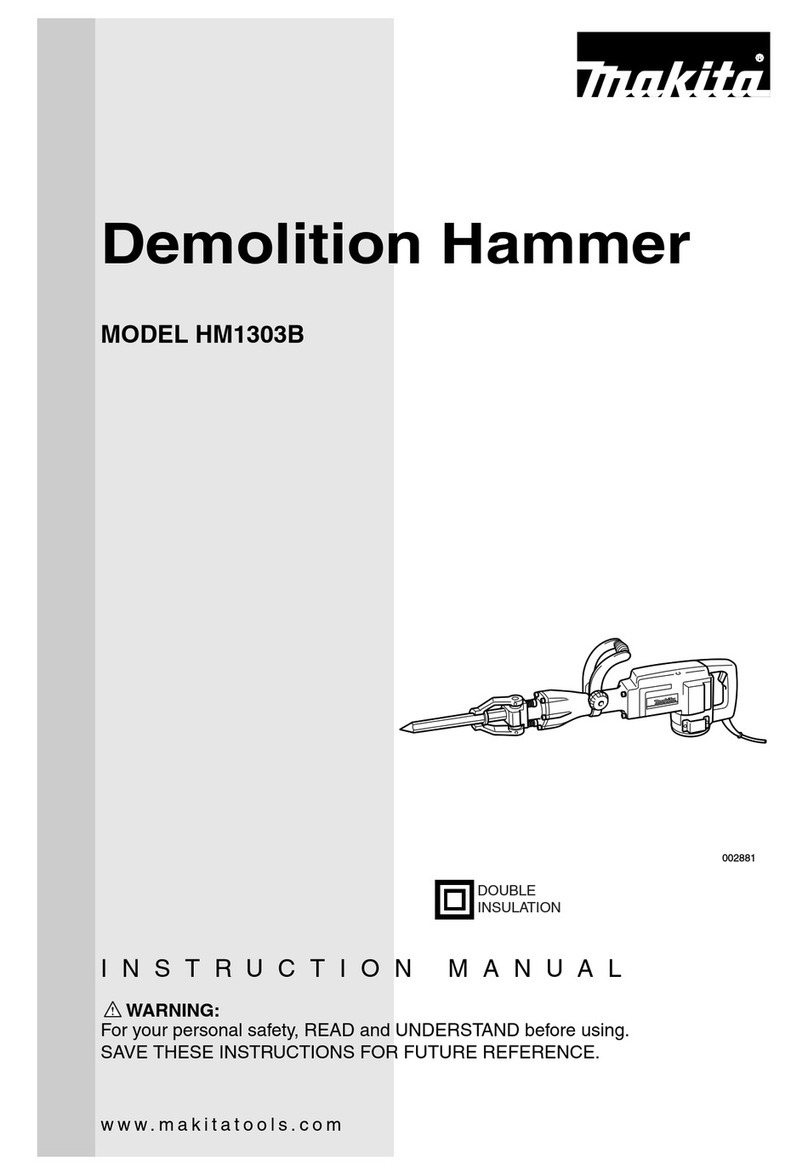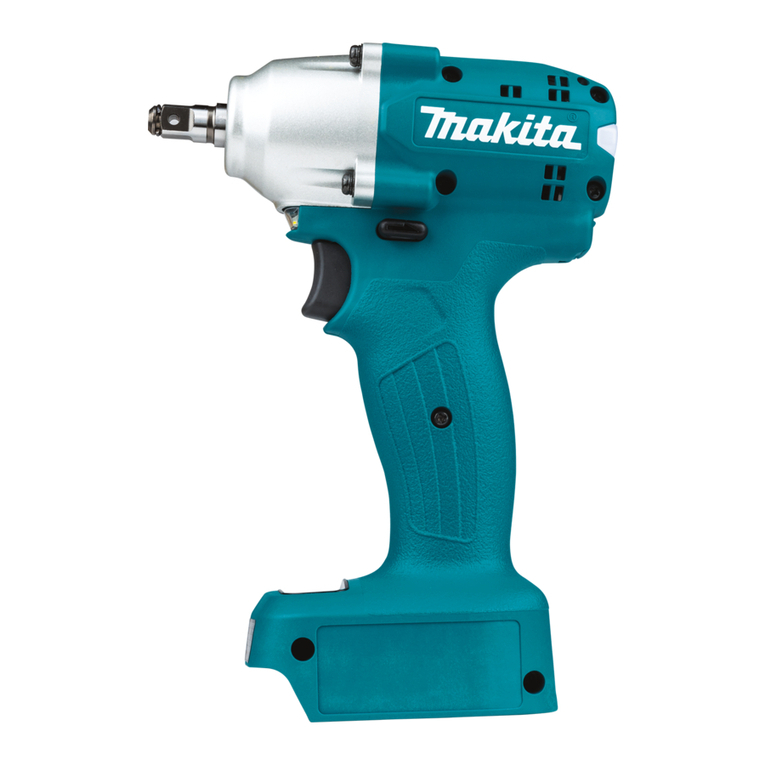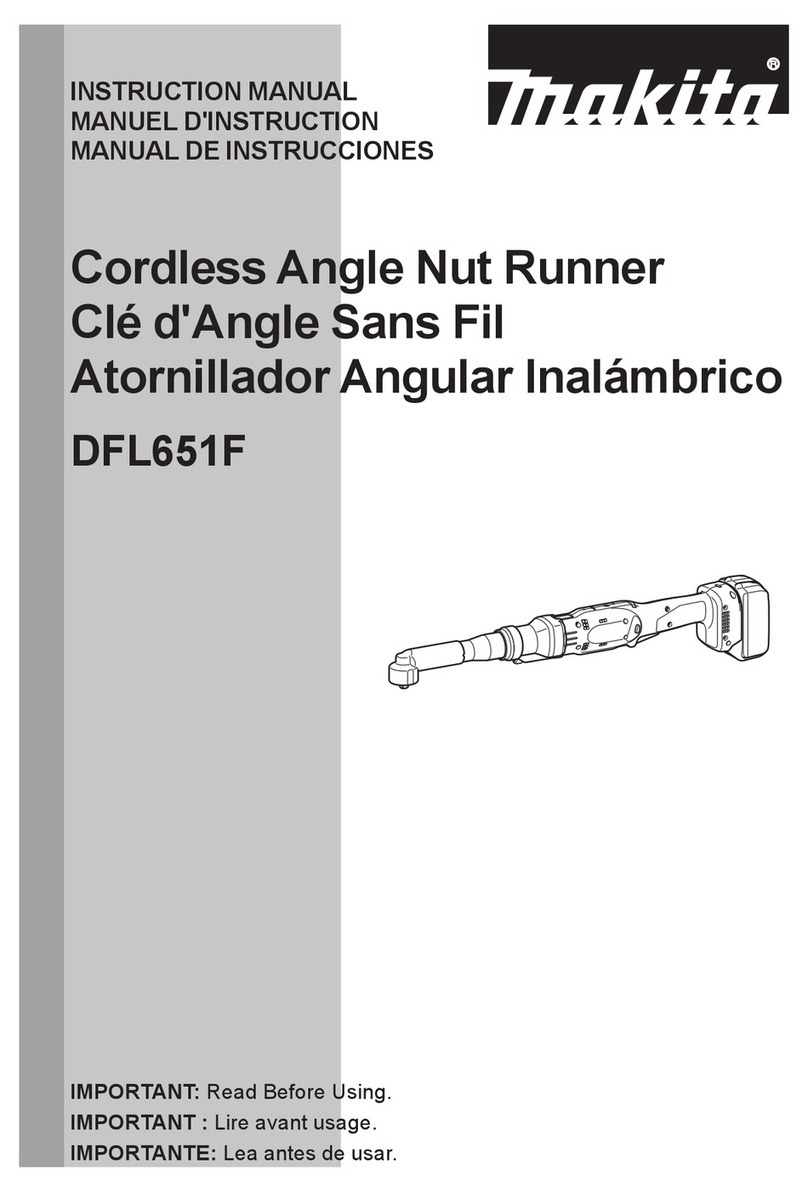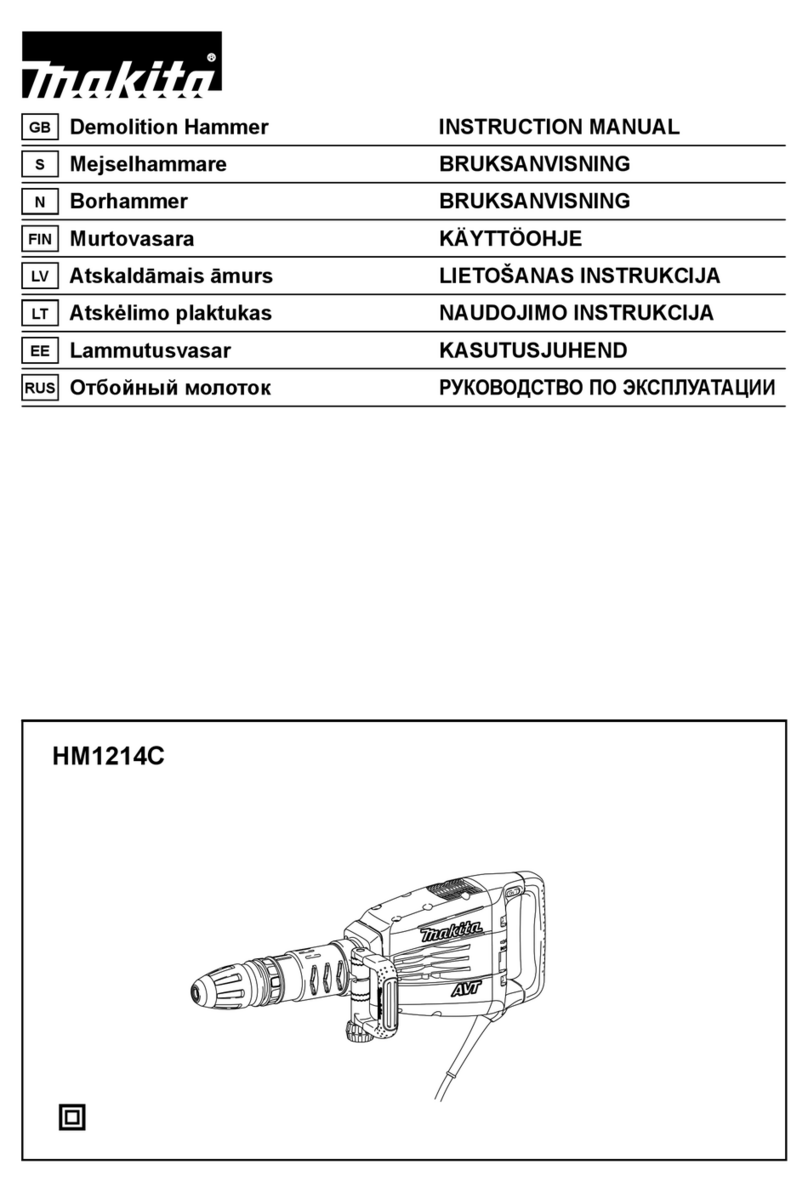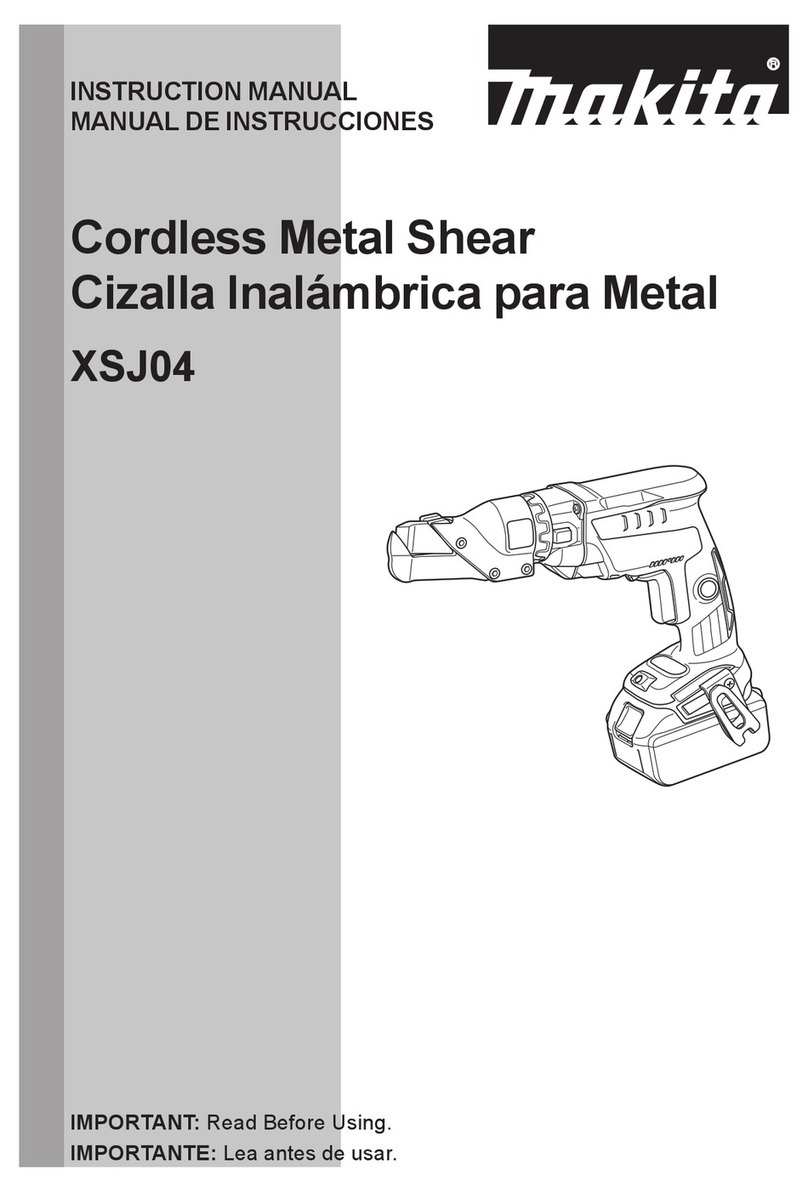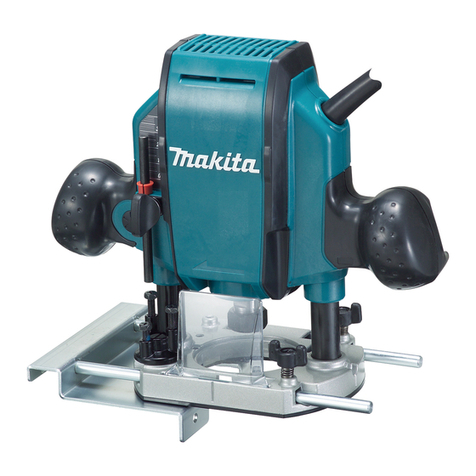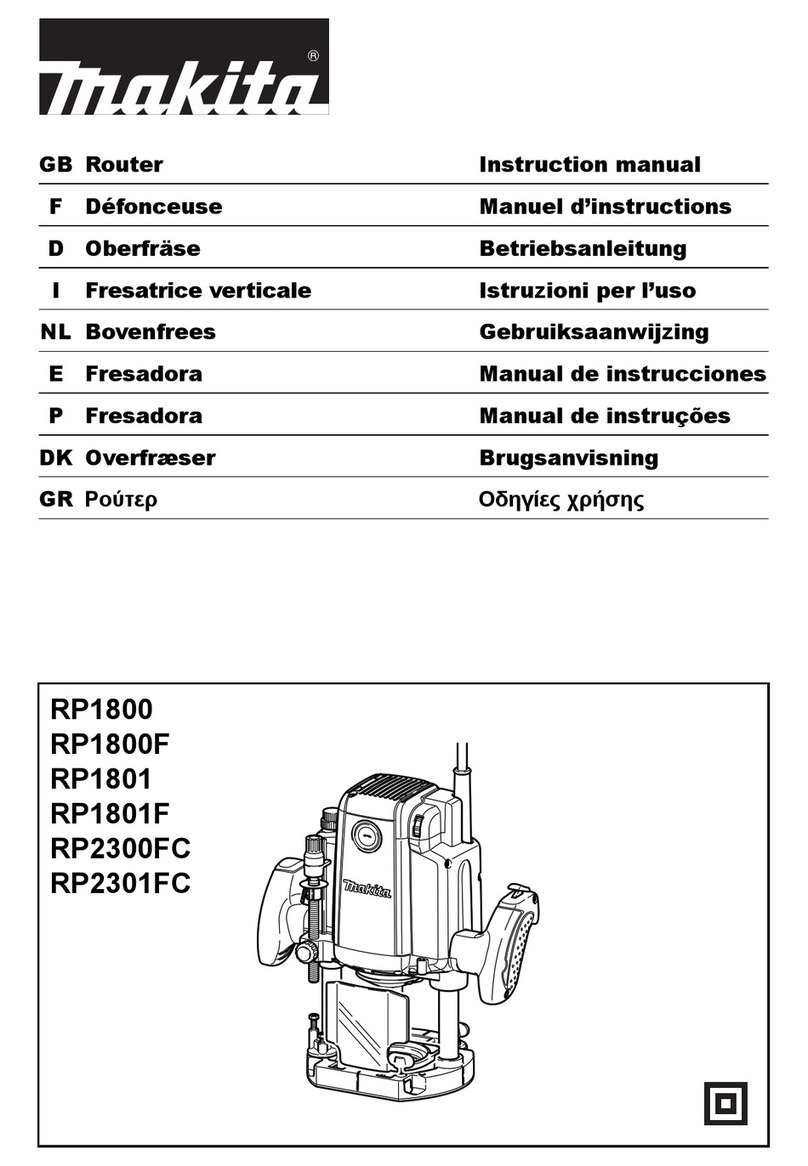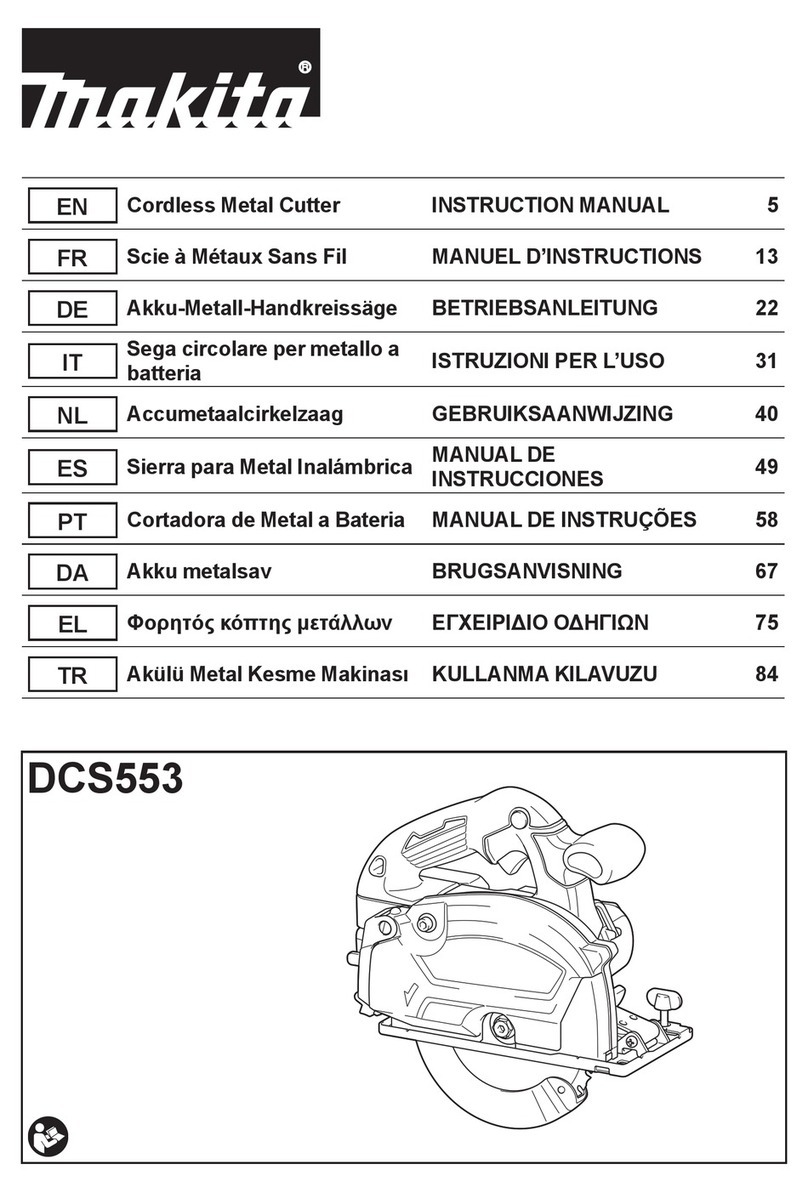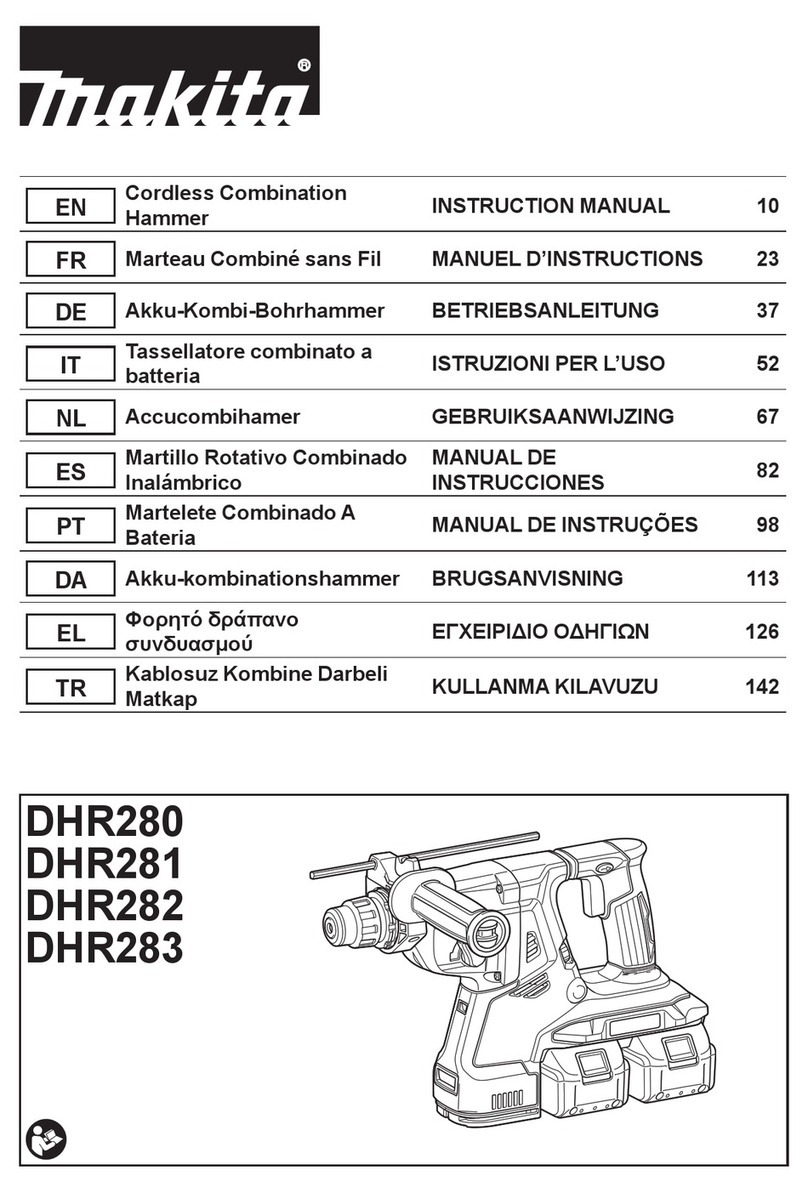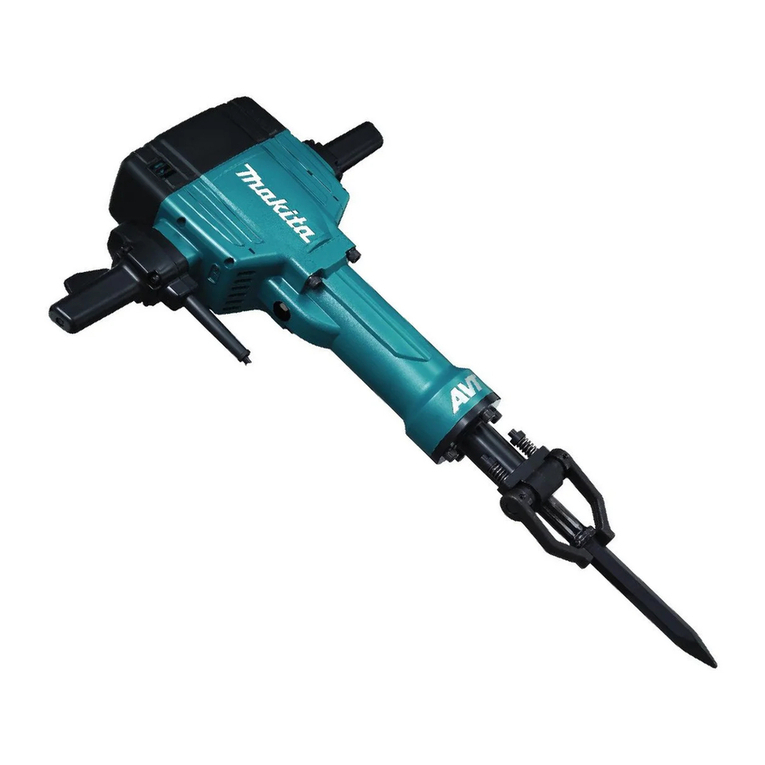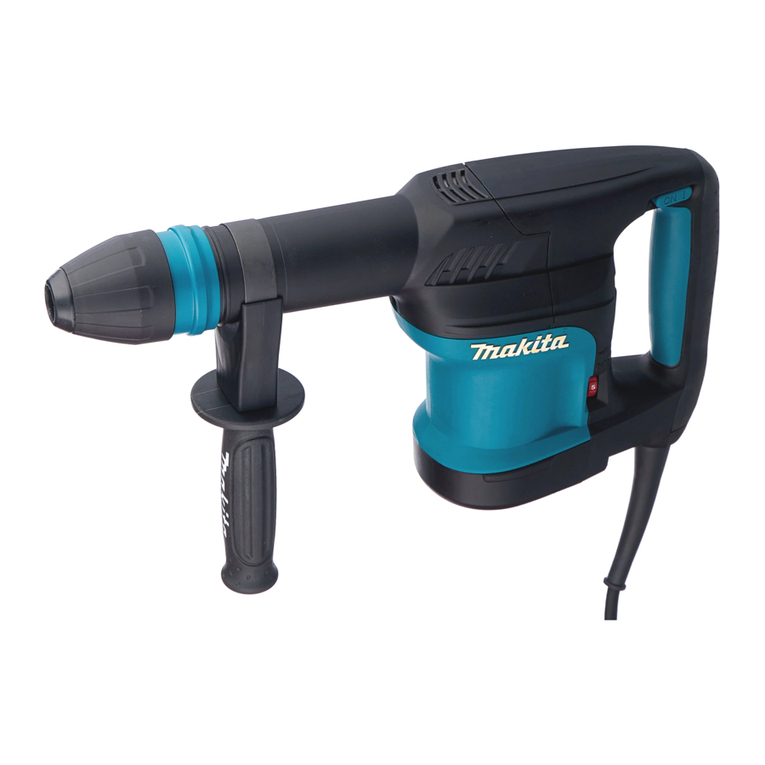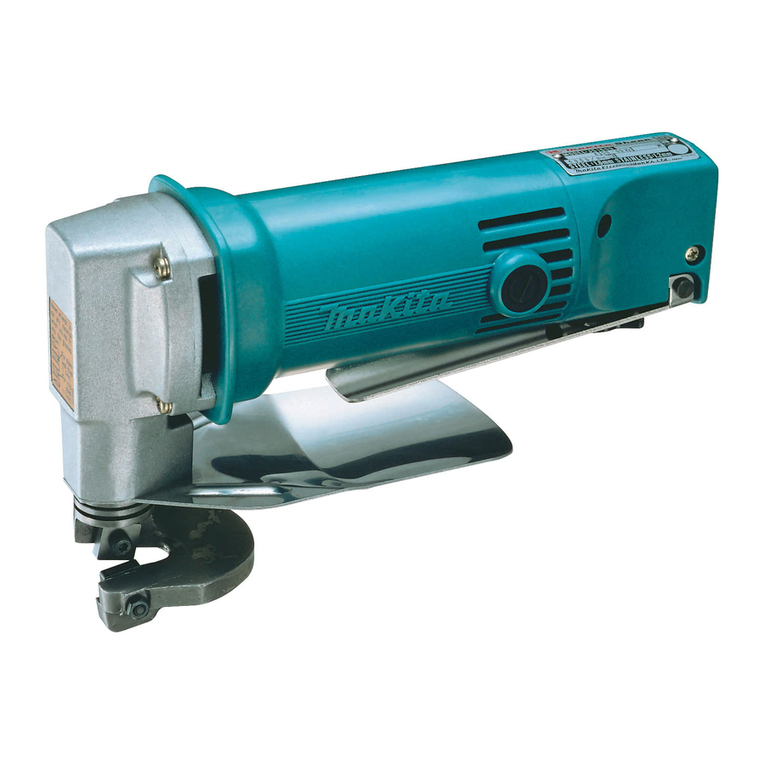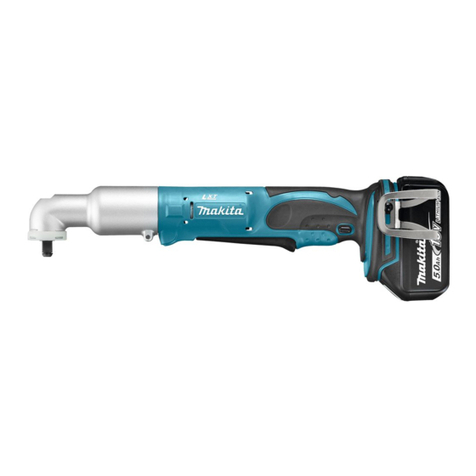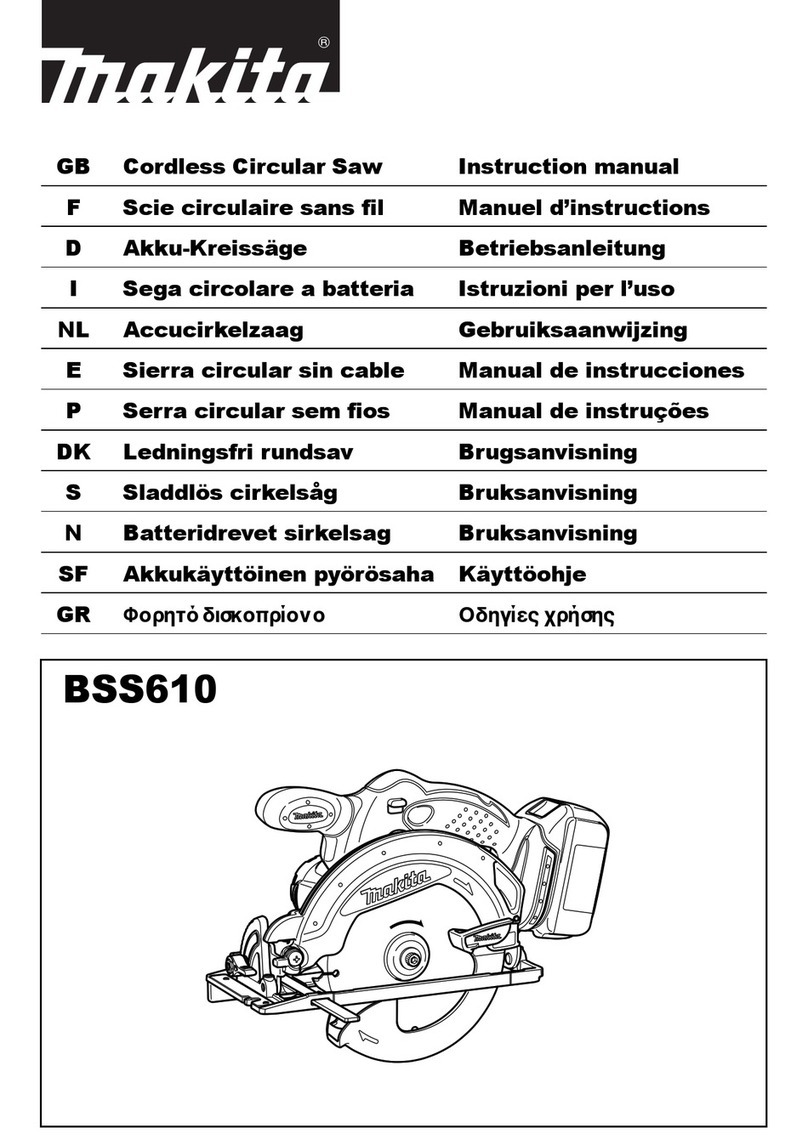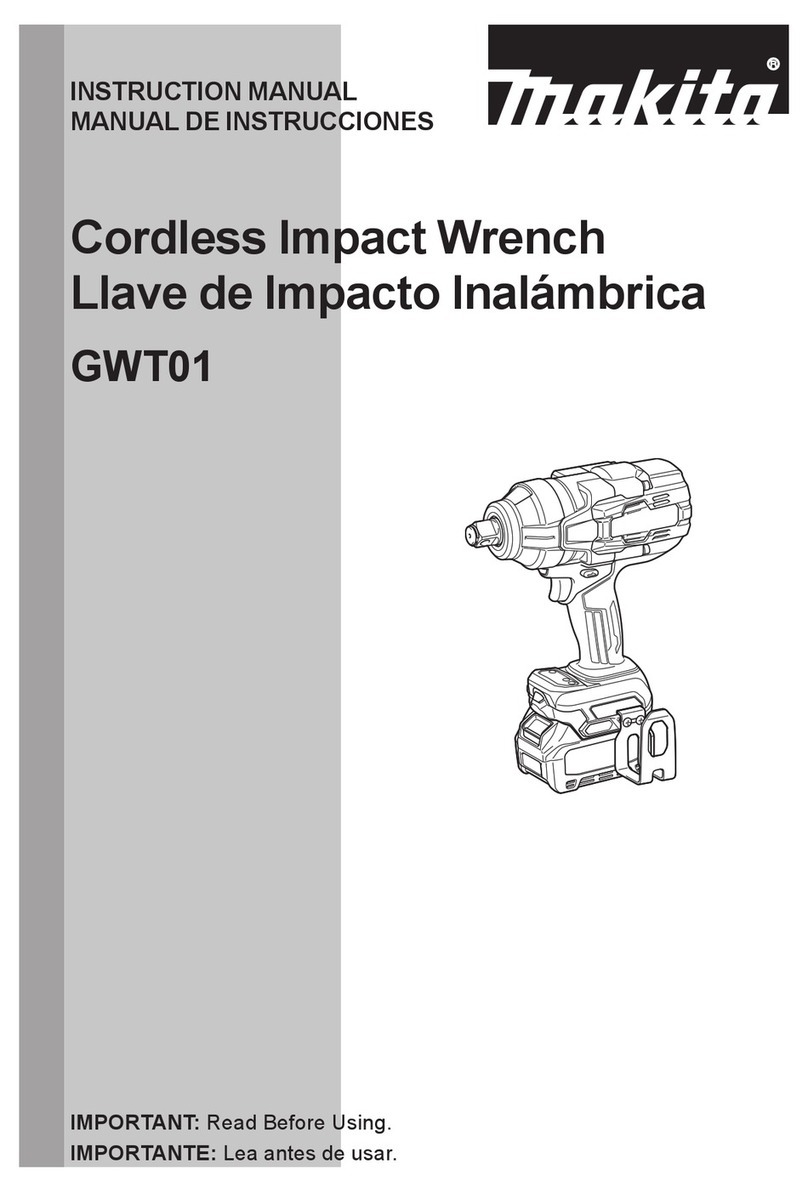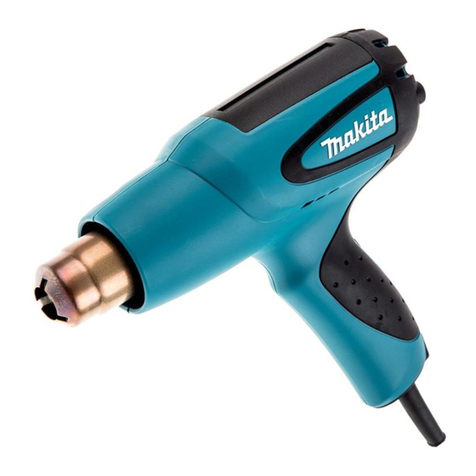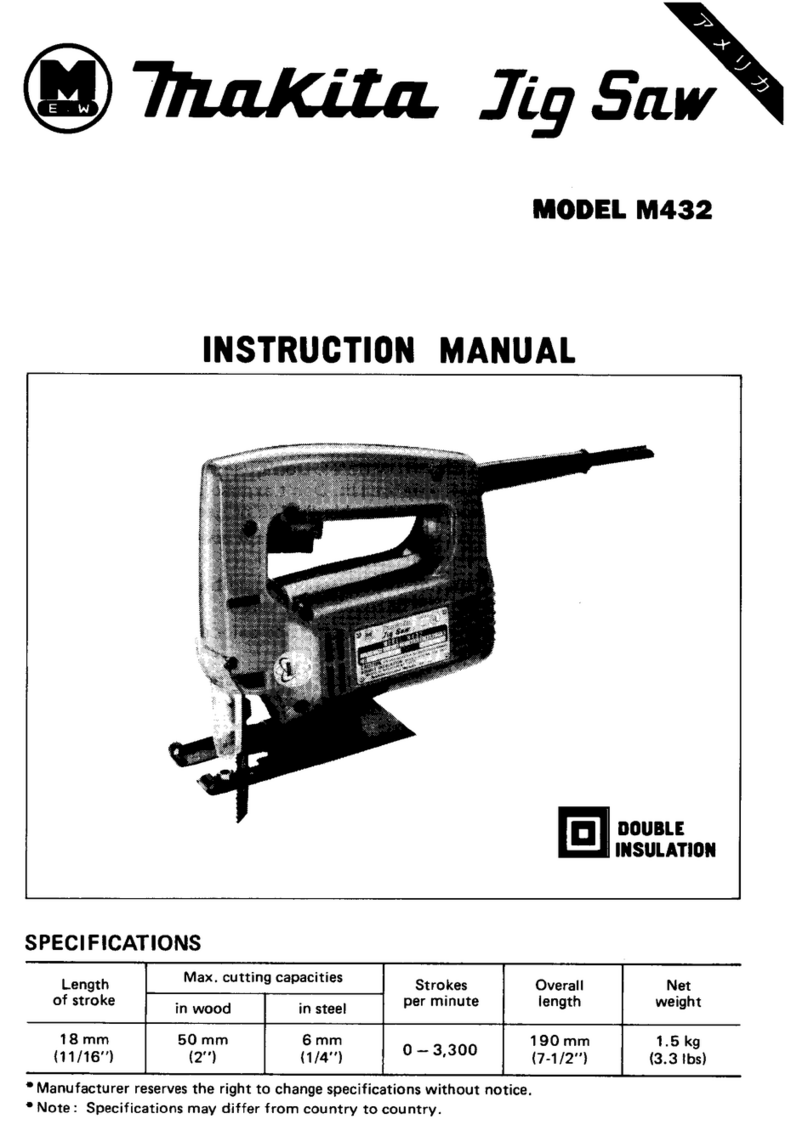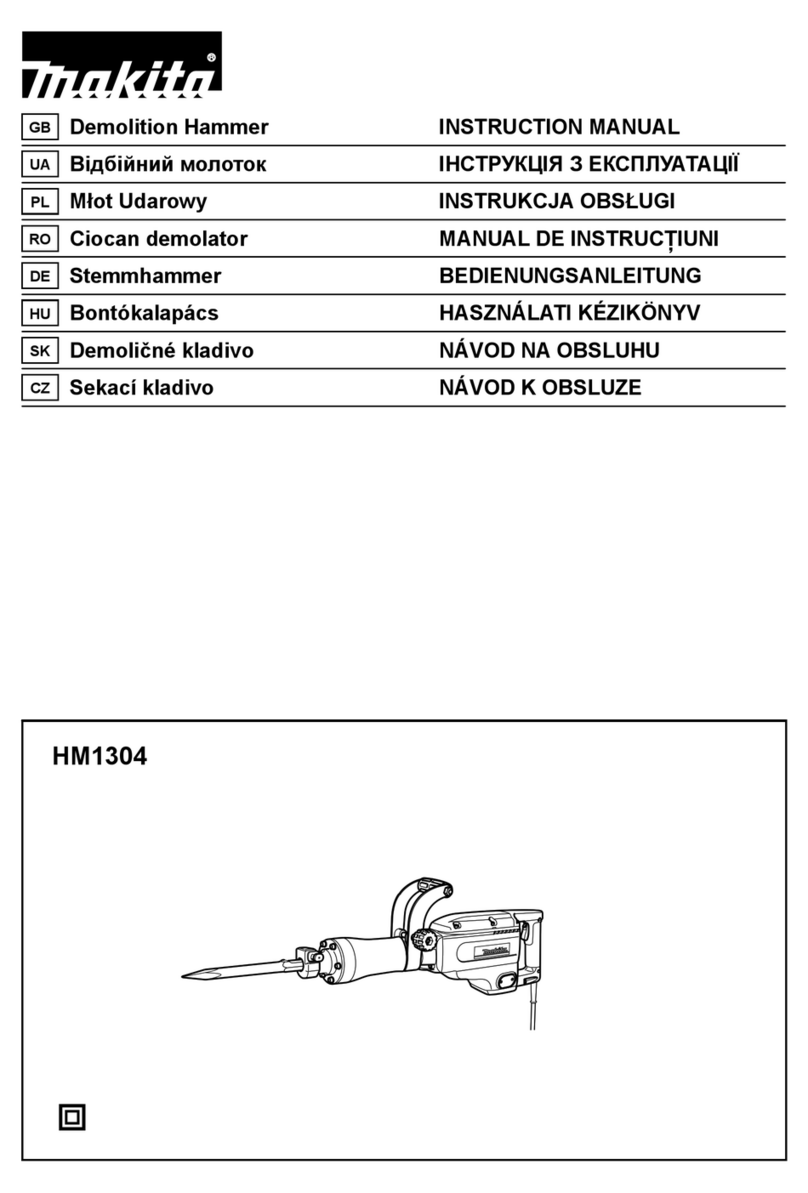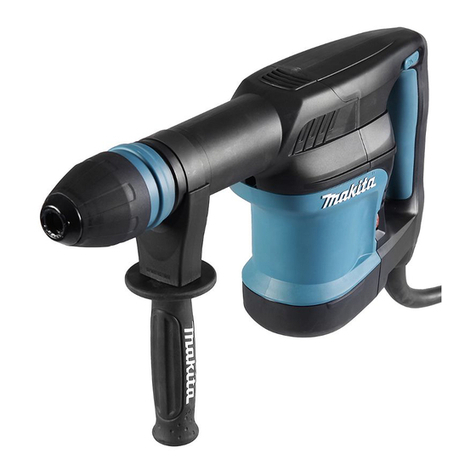
6
FUNCTIONAL DESCRIPTION
CAUTION:
• Always be sure that the tool is switched off and
unplugged before adjusting or checking function on
the tool.
Adjusting the depth of groove
Fig.1
6 grooving depths can be preset according to the size of
biscuit to be used.
Refer to the table below for the correspondence
between the sizes marked on the stopper and the biscuit
size. Fine adjustments to the grooving depth can be
made by turning the adjusting screw after loosening the
hex nut. This may become necessary after the blade has
been resharpened a few times.
Size on stopper 0 10 20 S D MAX
Biscuit size 0 10 20
---
Depth of groove 8 mm 10 mm 12.3mm 14.7mm13 mm 20 mm
*
* With the rubber spikes removed.
012681
Angle guide
The angle guide height can be moved up and down to
adjust the position of the blade in relation to the top of
the workpiece.
Fig.2
To adjust the angle guide height, loosen the lock lever
down and rotate the knob until the pointer points to the
desired scale graduation marked on the angle guide.
Fig.3
Then tighten the lock lever up to secure the angle guide.
The scale on the angle guide indicates the distance from
the top of the workpiece to the center of the blade
thickness.
The angle guide is removable from the fence according
to the need of your work. To remove the angle guide,
loosen the lock lever and turn the knob clockwise until it
comes out of the upper end of the fence.
Fence
NOTE:
• Remove the angle guide according to the need of
your work when using the tool with the angle of the
fence adjusted to other than 0 ゚. When you need to
use the angle guide under the above condition, be
sure to adjust the depth of groove to get a proper
depth.
Fig.4
Fig.5
The angle of the fence can be adjusted between 0° and
90° (positive stops at 0°, 45° and 90°). To adjust the
angle, loosen the lock lever and tilt the fence until the
pointer points to the desired graduation on the angle
scale. Then tighten the lock lever to secure the fence.
When the fence is set at 90°, both the distance from the
center of the blade thickness to the fence and the
distance from the center of the blade thickness to the
bottom of the blade cover are 10 mm.
Set plate
Fig.6
Fig.7
Use the set plate as shown in the figures when cutting
slots in thin workpieces.
Switch action
Fig.8
CAUTION:
• Before plugging in the tool, always check to see
that the slide switch actuates properly and returns
to the "OFF" position when the rear of the slide
switch is depressed.
• Switch can be locked in "ON" position for ease of
operator comfort during extended use. Apply
caution when locking tool in "ON" position and
maintain firm grasp on tool.
To start the tool, slide the slide switch toward the "I (ON)"
position. For continuous operation, press the front of the
slide switch to lock it.
To stop the tool, press the rear of the slide switch, then
slide it toward the "O (OFF)" position.
ASSEMBLY
CAUTION:
•
Always be sure that the tool is switched off and
unplugged before carrying out any work on the tool.
Removing or installing the blade
Fig.9
CAUTION:
• When installing the plate joiner blade, mount the
inner flange with the side marked "22" facing
toward you.
To remove the blade, loosen the clamp screw and open
the blade cover. Push the shaft lock and loosen the lock
nut using the lock nut wrench. To install the blade, first
mount the inner flange.
Then mount the blade and the lock nut. Securely tighten
the lock nut using the lock nut wrench. Close the blade
cover and tighten the clamp screw to secure the blade
cover.
CAUTION:
• Use only Makita lock nut wrench provided to
remove or install the blade.
• Always check the depth of groove after replacing
the blade. Reajust it if necessary.
